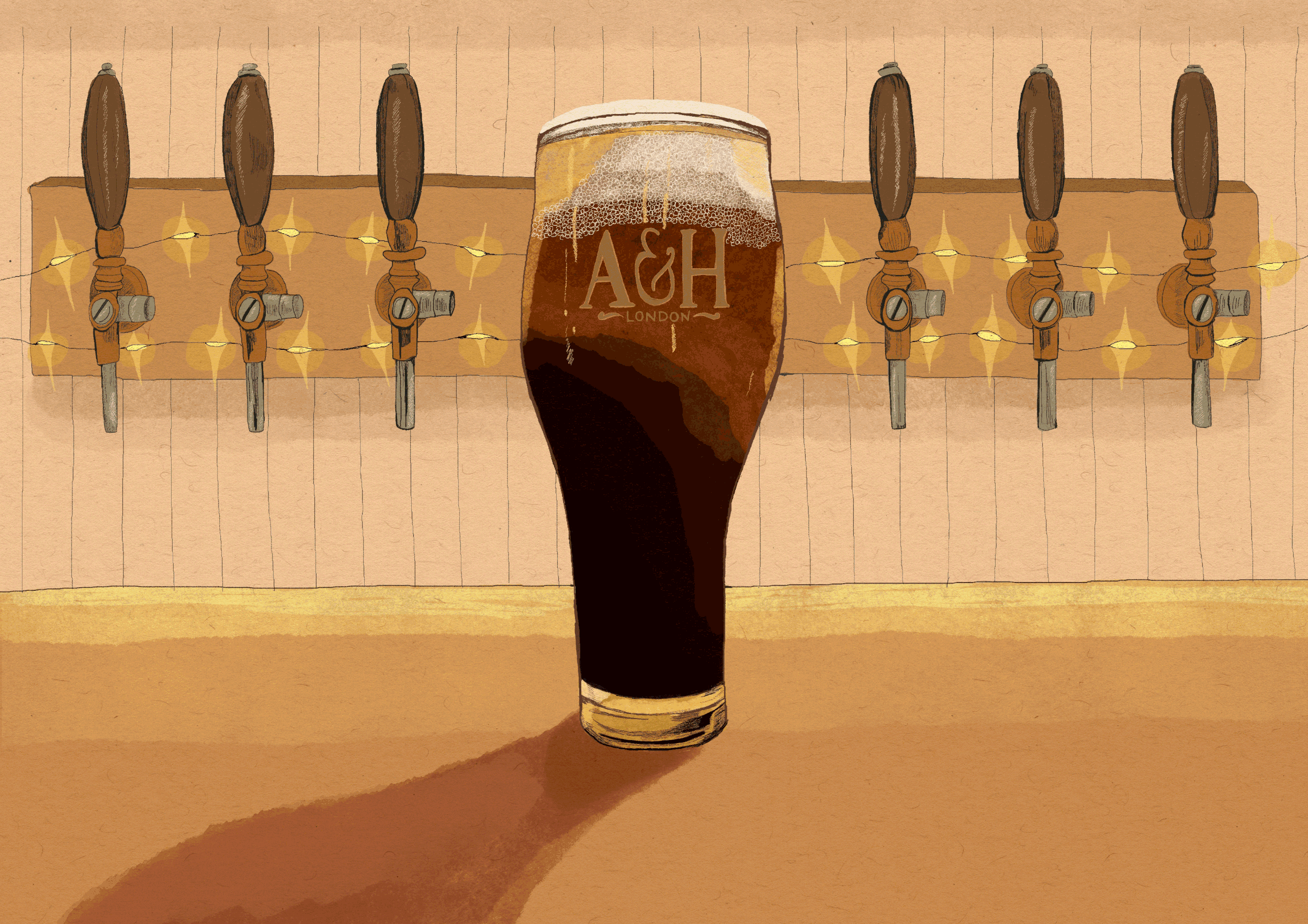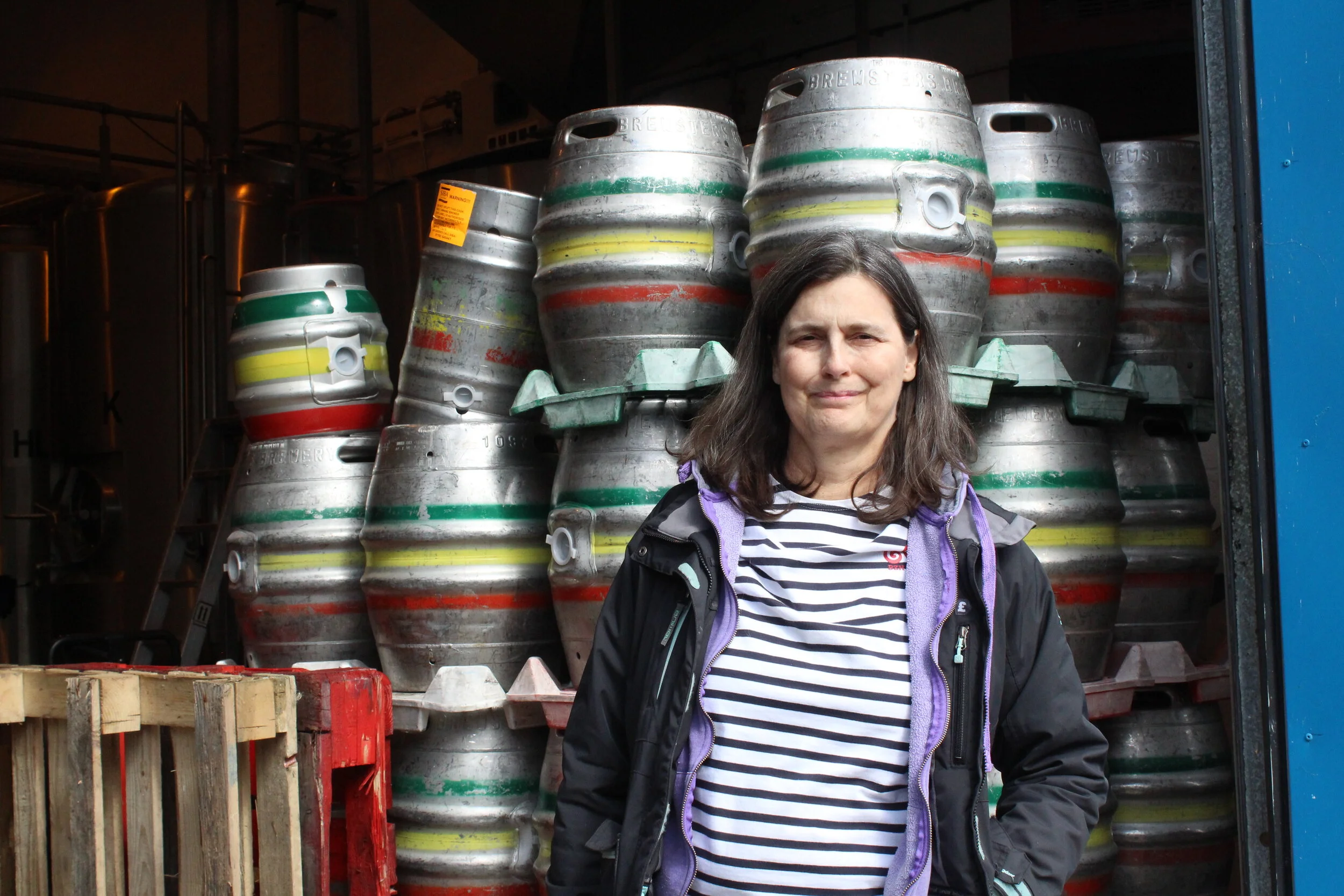Appetite for Disruption — The Rise (and Rise) of Anspach and Hobday’s London Black
Disrupting a marketplace dominated by a single major player sounds like a pipe dream for the average brewery. But London-based Anspach and Hobday has done just that, growing its production volume by a not insignificant 70% in the process.
Innovation is a vital way for businesses to adapt and grow. Clayton Christensen, a professor at Harvard Business School in Boston, Massachusetts, identifies three models for innovation: improving or enhancing existing products is sustaining innovation; low end disruption offers an alternative product at a lower price point to target price-sensitive customers; and new market disruption carves out a new segment in an existing market. The latter model allows small businesses to successfully challenge a large, established business. At least in theory.
Anspach and Hobday’s 4.4% ABV nitro porter, London Black, is the disruptive innovation. It is a rare and genuine David to Guinness, Diageo’s omnipresent Goliath.
In just three years, London Black has single-handedly fueled Anspach and Hobday’s growth, upping their production volume by nearly two-thirds at a time when other breweries have battened down the hatches, or even gone bust. Most significantly, this disruption has been achieved on their own terms.
Now a decade into their professional brewing journey, Paul Anspach and Jack Hobday started out as homebrewers who made a name for themselves with a 6.7% traditional London Porter, simply named ‘The Porter.’ They crowdfunded their way to the tune of £5000 which funded the purchase of a small brewery on South London’s nascent Bermondsey Beer Mile in 2014, before upgrading to a larger facility based in Croydon in 2020. Over its first 10 years the brewery has built a strong reputation for high-quality, modern beer that draws on London’s wealth of brewing heritage.
“Jack, Paul and I go way back,” Andreas Akerlund, co-founder of the London-based Grace Land pub group and Hackney’s Saint Monday brewery, tells me. “They used to come in and sell their beers at the Exmouth Arms back in 2014. Their darker beers always stood out to me, and we talked about a nitro stout many times over the years.”
Although Jack and Paul didn’t feel they had the knowledge to dip their toes into nitrogen dispense at that point, the seeds had been sown. Conscious that The Porter was too strong to ever achieve real volume for them, they dialled back the recipe to create ‘The Session Porter.’ An unexpected listing with chain retailer Majestic Wines forced them to brew multiple batches of the same beer very close together to fulfil the order. Unbeknownst to them, this was the key recipe development phase that birthed London Black.
““Their darker beers always stood out to me, and we talked about a nitro stout many times over the years.””
A silver lining to the disruption caused by the Covid-19 pandemic in 2020 was the time and space for the brewery to finally work on a nitro version of The Session Porter.
“Understandably, Guinness doesn’t give you a how-to guide on how to get the beer in kegs,” Jack tells me, before admitting the first batch didn’t nail the brief entirely. Apparently, it was a touch too carbonated—interfering with the beer’s smooth texture. But the flavour was right, and after a few tweaks to ensure the beer’s stability, it was ready to launch.
Due to further Covid-19 enforced lockdowns and the period of uncertainty within hospitality that followed, the beer couldn’t be launched as soon they’d anticipated. This gave time for careful planning of the branding, and several accounts—including Andreas’ Grace Land pubs—to be lined up ready for a full launch once lockdown ended in May 2021.
“The default name was The Nitro Porter,” Jack tells me. “I wonder if we’d be having this conversation if we had stuck with that. With London Black, we were able to capture the provenance of the beer; the fact that we’re a London brewery that has grown up making porters and are proud that our flagship beer genuinely is a London porter.”
Behind the name is a clean look that has served the beer well. It’s the result of Anspach and Hobday being picked up by branding agency Kastner & Partner in 2014. Kastner famously brought Red Bull to prominence with its “Gives you Wings” slogan, and was looking for small businesses to work with to replicate that success. They introduced the brewery to illustrator Alan Batley. whose woodcut style neatly encapsulates everything Paul and Jack value about brewing traditional styles in a contemporary way.
Illustrations by Laurel Molly
This attention to aesthetics continues with London Black. The gleaming gold lettering on the branded pint glasses stands out beautifully against the brooding darkness of the beer as the creamy cascade settles. Jack tells me they opted for real gold for the glassware, as it was the only thing that could reflect the quality of ingredients and the care taken over every pint. The concept won them the business design award from the Society of Independent Brewers (SIBA) in 2023.
Of course, there is also substance behind the style. Take a sip of London Black and you’ll experience a dry, roasted bitterness so crisp that it is almost textural, like crunching on freshly roasted coffee beans. This is balanced by a smooth body as rich as double cream, and a complex flavour that finishes with the merest wisp of red fruits drifting over your palate, bringing you back for another taste.
There have already been many imitators of its branding—perhaps an indicator of how well received London Black has been by drinkers—but, crucially, not using real gold. These include Extra Black from Campervan Brewery in Edinburgh and Black Heart from Aberdeenshire’s perennial miscreants BrewDog. Despite the increasing attention its alleged chronic mistreatment of their workforce has received, Black Heart has been undeniably massive for BrewDog’s bars, selling upwards of 300,000 pints within the chain in its first year of release.
It’s no coincidence that all of these examples bear more than a passing resemblance to the gold-embossed Guinness tankards of the 1960s. Jack and Paul are happy to admit the pervasive influence of the global brewing giant on their work, and it’s hard to overstate the influence of the shadow that St James’s Gate throws over the entire brewing world, especially when it comes to nitro porter.
When attempting to take on Guinness, it’s also worth pointing out the scale of the challenge. 350,000 litres of London Black are now being brewed each year, with further expansion planned. From a standing start, that’s an impressive achievement in less than three years. But if litres were metres, then Guinness’ UK on-trade volume is the height of The Shard with London Black just a Labrador standing dolefully beside it. At the current rate of expansion, Anspach and Hobday aren’t going to be treading on Guinness’ heels any time soon.
““We didn’t say this is better than Guinness... It just happens to be better.””
“It was a tough sell to have on,” says Jack Duignan, who owns and manages London pub The Sutton Arms with his dad, Mick. He ran London Black side-by-side with Guinness, but eventually decided to remove the former in mid-2023. “It’s absolutely nothing against the beer or brewery as they are good friends of ours, but it just didn't work out here.”
Crucially, however, Anspach and Hobday have never had fantasies of toppling Guinness.
“We didn’t say this is better than Guinness, we’re gonna destroy Guinness,” Paul explains. “It just happens to be better. I think that approach is more palatable, it doesn’t get people’s backs up.”
“We didn’t invent this,” Jack says. “Guinness were the ones who did the first nitro stout. It’s very common in the craft beer world that people have it as their go-to. I quite like a Guinness.”
“It was never our intent to try and upset that. Our angle is loving the fact that this is something from London. That doesn’t mean that you hate or dislike Guinness,” he adds.
This is what makes London Black stand out from an increasingly crowded marketplace of nitro porters. Dark beers are Anspach and Hobday’s focus, while many other small brewers are making a nitro stout specifically to cater for Guinness customers who visit their venues.
“It’s a style which is currently flavour of the month,” says Catherine Webber, business development manager at Birmingham’s Attic Brewery. “In our taproom and the Barrel Store, people will want to drink a stout, so that’s why we’ve made one. We get asked what have you got that’s like Stella, what have you got that’s like Guinness? It’s familiarity. The majority of drinkers will drink what they know.”
That familiarity is compelling. I met a lady named Lizi at a meetup of all-women beer group the Brum Beer Babs at The Wolf in Birmingham. She had a pint of London Black in her hand, so I decided to ask why she had ordered it.
“The honest answer is I really wanted a Guinness and it was the closest thing to it,” Lizi laughs. “Lately, I've become very bland in my taste and I quite enjoy a Guinness. I think possibly my taste buds were ruined by Covid and old age. This is lovely but given the choice, I’d order a Guinness. It's crisper. Familiar.”
The story of London Black is the natural evolution of a product that cemented Anspach and Hobday’s brewing credentials. Jack and Paul have found success by reimagining their deep-rooted passion for a modern audience. These dark beers were part of London’s history, taken to Dublin and commercialised to perfection by Guinness. Breweries like Anspach and Hobday are reclaiming this history. It already has more than 250 outlets in the UK and five permanent lines in Belgium.
You might even say they are presenting a challenge (albeit a small one) to Dublin’s monopoly, sticking two fingers up to the establishment by announcing the launch of London Black in cans on St Patrick’s Day 2024.
Their sales will almost certainly never match those of Guinness, but that is not their aim. It’s not about being rulers of the world, but rather kings of their own castle. Careful, measured growth is allowing their new market disruption to rumble along sustainably. They aspire next to become the biggest London porter producer, and they only have 100,000 litres to go to match current title holders, Fuller’s.
Paul and Jack have, sensibly, avoided being belligerent towards Guinness and their hold on the market. They are respectful of what Arthur Guinness and his successors have achieved but mainly they focus on their product and their clients. Instead of offering customers the choice of “us or them”, they provide a much-needed independent alternative to macro. A recent article in the London Economic said London Black was winning the ‘Stout Wars.’ Jack couldn’t be more proud.
“I think it’s evidence that we’re making some gains; to beat all the macro producers who are having a go and Guinness,” he says. “There’s your disruption. And it’s not even a stout.”


















